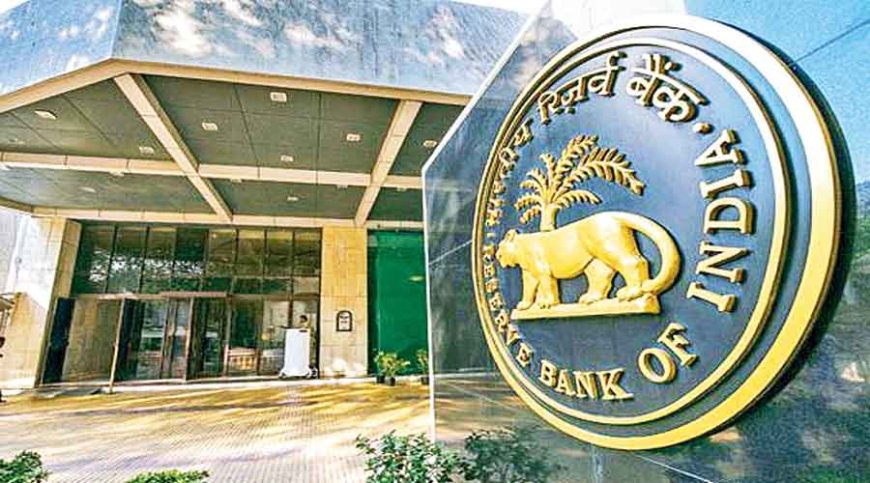RBI Slashes Key Rates to Spur Economic Growth: What It Means for You and the Markets
In a strategic move to boost economic momentum, the Reserve Bank of India (RBI) has cut key interest rates. Discover the implications for loans, inflation, markets, and business investments in this detailed report.

In a major monetary policy decision, the Reserve Bank of India (RBI) has slashed the repo rate by 50 basis points, bringing it down to 5.75%, marking the first rate cut of 2025. The move, aimed at reviving economic growth amid slowing industrial output and tight liquidity, signals a more accommodative stance by the central bank.
RBI Governor Shaktikanta Das, while announcing the decision post the Monetary Policy Committee (MPC) meeting, emphasized the need to support demand while keeping inflation within manageable bounds.
"The evolving macroeconomic situation calls for proactive measures. This rate cut is intended to encourage credit flow, private investment, and overall consumption," he stated.
For full details of the announcement, refer to the RBI Press Release.
What Does the Rate Cut Mean?
The repo rate is the rate at which RBI lends short-term funds to commercial banks. A cut in this rate is a strong signal from the central bank to stimulate economic activity by making borrowing cheaper.
Impacts at a Glance:
-
Home and Auto Loans: Lending rates are likely to drop, making EMIs more affordable.
-
Corporate Borrowing: Lower interest costs could prompt businesses to invest more in expansion and hiring.
-
Stock Market Response: Equities typically react positively to rate cuts. The Nifty and Sensex have already posted modest gains.
-
Savings Returns: Bank deposit rates may decline, potentially impacting senior citizens and fixed-income savers.
Why Did RBI Cut Rates?
The decision comes amid a mix of slowing GDP growth, muted consumer demand, and a favorable inflation outlook.
According to the National Statistical Office (NSO), India’s Q4 GDP growth slowed to 5.8%, down from 6.4% the previous quarter. Industrial output growth also dipped to 3.1%, raising concerns of a broader economic deceleration.
At the same time, headline retail inflation as measured by the Consumer Price Index (CPI) remains within RBI’s comfort zone at 4.3%, offering the central bank room to maneuver without stoking price pressures.
Learn more about CPI trends at MOSPI CPI Dashboard.
Sectoral Impact Analysis
1. Real Estate & Housing
Lower interest rates typically boost home loan affordability, leading to improved demand in the housing sector. Developers, especially in tier-2 and tier-3 cities, could benefit as unsold inventory clears faster.
2. Banking & Financial Services
While rate cuts reduce net interest margins (NIMs) in the short run, the increase in loan disbursal and retail credit demand may offset the impact. Banks like HDFC, SBI, and Axis Bank are likely to revise lending rates soon.
3. Manufacturing & Infrastructure
Industries reliant on capital expenditure and heavy borrowing stand to gain significantly. Companies in steel, cement, and engineering may ramp up capacity in anticipation of future demand.
4. Stock Markets
Markets have welcomed the move. The Nifty Bank index rose 1.6% post-announcement, signaling investor optimism. Market analysts at Moneycontrol expect further upside in rate-sensitive stocks.
Global Context
India's move aligns with a broader global shift towards easing. The European Central Bank (ECB) recently trimmed rates by 25 basis points, and the Federal Reserve in the U.S. has paused rate hikes amidst mixed signals from inflation data.
As per the IMF Global Economic Outlook, synchronized monetary easing could help prevent a global slowdown.
What Experts Are Saying
Economists and analysts have largely applauded the RBI's proactive move:
-
Dr. Soumya Kanti Ghosh, Chief Economic Advisor at SBI:
“This is the right step at the right time. It’s essential for reviving credit demand and supporting MSMEs.” -
Nilesh Shah, MD at Kotak AMC:
“Lower interest rates will improve equity risk premium and attract more institutional inflows.” -
FICCI, the industry chamber, also welcomed the decision in its official statement, calling it "a much-needed boost for economic momentum."
Risks and Caution Ahead
While the rate cut offers immediate stimulus, experts caution against over-reliance on monetary policy. Structural reforms, faster public infrastructure spending, and fiscal discipline will be equally crucial to sustain growth.
Moreover, any unexpected rise in inflation—especially due to oil prices or food supply disruptions—could limit RBI’s scope for further cuts.
For policy tracker updates, visit PRS India’s Economic Policy Dashboard.
Final Word
The RBI’s rate cut is a calculated step to reignite economic growth amid signs of slowing momentum. While borrowers and businesses stand to gain, sustained recovery will require coordinated policy actions across sectors.
As India navigates the delicate balance between growth and inflation, today’s decision underscores the central bank’s commitment to proactive, data-driven policy.














